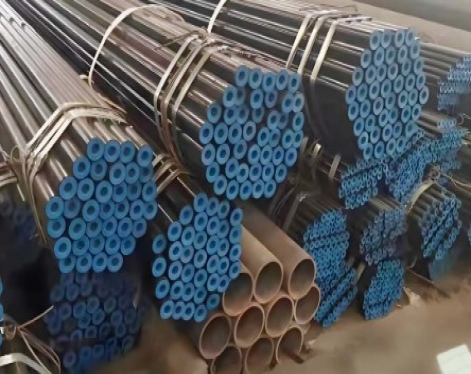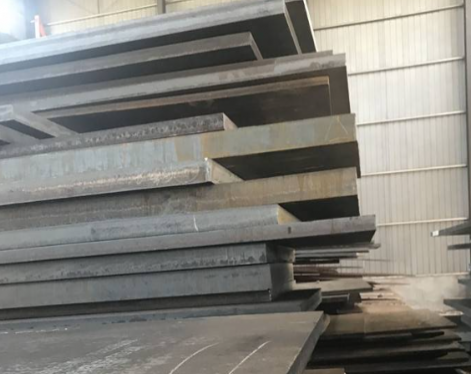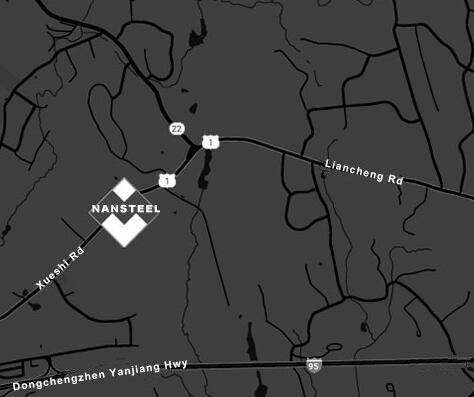Seamless steel pipes for fluids are steel pipes specially designed for conveying fluid media such as liquids, gases and slurries. Since fluid transportation requires extremely high safety, sealing and durability of pipelines, such seamless steel pipes must meet strict quality standards. These standards usually specify key technical requirements for steel pipes, such as material, dimensional tolerance, mechanical properties, chemical composition, surface quality, non-destructive testing methods, and water pressure testing. The following is a summary by Nansteel Manufacturing Co., Ltd of commonly used international fluid seamless steel pipe standards.
International standards
1. API SPEC 5L (American Petroleum Institute Standard 5L) - Linepipe Specification
Overview: This is the most important line pipe standard in the global oil and gas industry, covering seamless and welded steel pipes used for oil, gas, water and other transportation pipelines.
Key Features:
PSL1 and PSL2: Two product specification levels are specified. PSL2 has stricter requirements in chemical composition, mechanical properties, non-destructive testing and traceability, and is suitable for more critical applications.
Steel grade: From A to X (such as B, X42, X52, X60, X70, X80, etc.), the number indicates the minimum yield strength.
Low temperature toughness: PSL2 grade has mandatory requirements for low temperature impact toughness.
Corrosion resistance: Some high-grade line pipes will consider resistance to sulfide stress corrosion cracking (Sour Service) and carbon dioxide corrosion.
Applications: long-distance oil and gas transmission pipelines, gathering pipelines, oilfield pipeline networks, urban gas pipeline networks, etc.
2. ASTM A106 / ASME SA-106 - Seamless carbon steel pipe for high temperature service
Overview: Specifies seamless carbon steel pipe for high temperature service.
Main grades: Grade A, Grade B (most commonly used), Grade C.
Features: Good high temperature performance and pressure bearing capacity.
Application: Pipeline systems for transporting high-temperature and high-pressure fluids (such as steam, hot water, and oil products) in industries such as petroleum, natural gas, electric power, petrochemicals, and refineries.

3. ASTM A333 / ASME SA-333 - Seamless carbon and alloy steel pipe for low-temperature service
Overview: Specifies seamless carbon steel and alloy steel pipe for low-temperature service.
Main grades: Gr.1, Gr.3, Gr.6 (most commonly used), etc.
Features: Excellent low-temperature impact toughness, resistant to brittle fracture at low temperatures.
Applications: Liquefied natural gas (LNG) transportation, cryogenic storage, refrigeration equipment, and pipelines in extremely cold regions.
4. ASTM A312 / ASME SA-312 - Seamless and welded austenitic stainless steel pipe
Overview: This standard specifies seamless austenitic stainless steel pipe for use in general corrosion or high-temperature environments.
Main grades: 304/304L, 316/316L, 321, 347, etc.
Features: Excellent corrosion resistance, good high-temperature strength, and processability.
Applications: Fluid conveying systems requiring high corrosion resistance or hygiene requirements in the chemical, food processing, pharmaceutical, seawater desalination, and medical equipment industries.
5. ISO 3183 - Petroleum and natural gas industries — Steel pipes for pipeline transportation systems
Overview: This is an international standard that is highly coordinated with API 5L and also specifies the technical requirements for steel pipes used in pipeline transportation systems in the oil and natural gas industries.
Factors to consider when selecting standards for seamless steel pipes for fluids
Conveying medium: Is it water, oil, gas, acid, alkali, or slurry? What are the corrosiveness, temperature, and pressure of the medium?
Operating temperature and pressure: The maximum and minimum temperatures, as well as the operating pressure, that the piping system needs to withstand.
Environmental conditions: Is the pipeline buried, overhead, indoors, or outdoors? Are there any special environments such as low temperature, high temperature, humidity, or corrosive gases?
Project location and regulations: Which country or region's standards and regulations are followed.
Safety requirements: How serious are the consequences of pipeline failure (such as leakage, explosion).
Economical: Select the most cost-effective solution while meeting all technical requirements.
Read more: The working principle of fluid seamless pipe
International standards
1. API SPEC 5L (American Petroleum Institute Standard 5L) - Linepipe Specification
Overview: This is the most important line pipe standard in the global oil and gas industry, covering seamless and welded steel pipes used for oil, gas, water and other transportation pipelines.
Key Features:
PSL1 and PSL2: Two product specification levels are specified. PSL2 has stricter requirements in chemical composition, mechanical properties, non-destructive testing and traceability, and is suitable for more critical applications.
Steel grade: From A to X (such as B, X42, X52, X60, X70, X80, etc.), the number indicates the minimum yield strength.
Low temperature toughness: PSL2 grade has mandatory requirements for low temperature impact toughness.
Corrosion resistance: Some high-grade line pipes will consider resistance to sulfide stress corrosion cracking (Sour Service) and carbon dioxide corrosion.
Applications: long-distance oil and gas transmission pipelines, gathering pipelines, oilfield pipeline networks, urban gas pipeline networks, etc.
2. ASTM A106 / ASME SA-106 - Seamless carbon steel pipe for high temperature service
Overview: Specifies seamless carbon steel pipe for high temperature service.
Main grades: Grade A, Grade B (most commonly used), Grade C.
Features: Good high temperature performance and pressure bearing capacity.
Application: Pipeline systems for transporting high-temperature and high-pressure fluids (such as steam, hot water, and oil products) in industries such as petroleum, natural gas, electric power, petrochemicals, and refineries.

3. ASTM A333 / ASME SA-333 - Seamless carbon and alloy steel pipe for low-temperature service
Overview: Specifies seamless carbon steel and alloy steel pipe for low-temperature service.
Main grades: Gr.1, Gr.3, Gr.6 (most commonly used), etc.
Features: Excellent low-temperature impact toughness, resistant to brittle fracture at low temperatures.
Applications: Liquefied natural gas (LNG) transportation, cryogenic storage, refrigeration equipment, and pipelines in extremely cold regions.
4. ASTM A312 / ASME SA-312 - Seamless and welded austenitic stainless steel pipe
Overview: This standard specifies seamless austenitic stainless steel pipe for use in general corrosion or high-temperature environments.
Main grades: 304/304L, 316/316L, 321, 347, etc.
Features: Excellent corrosion resistance, good high-temperature strength, and processability.
Applications: Fluid conveying systems requiring high corrosion resistance or hygiene requirements in the chemical, food processing, pharmaceutical, seawater desalination, and medical equipment industries.
5. ISO 3183 - Petroleum and natural gas industries — Steel pipes for pipeline transportation systems
Overview: This is an international standard that is highly coordinated with API 5L and also specifies the technical requirements for steel pipes used in pipeline transportation systems in the oil and natural gas industries.
Factors to consider when selecting standards for seamless steel pipes for fluids
Conveying medium: Is it water, oil, gas, acid, alkali, or slurry? What are the corrosiveness, temperature, and pressure of the medium?
Operating temperature and pressure: The maximum and minimum temperatures, as well as the operating pressure, that the piping system needs to withstand.
Environmental conditions: Is the pipeline buried, overhead, indoors, or outdoors? Are there any special environments such as low temperature, high temperature, humidity, or corrosive gases?
Project location and regulations: Which country or region's standards and regulations are followed.
Safety requirements: How serious are the consequences of pipeline failure (such as leakage, explosion).
Economical: Select the most cost-effective solution while meeting all technical requirements.
Read more: The working principle of fluid seamless pipe









